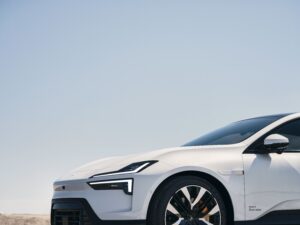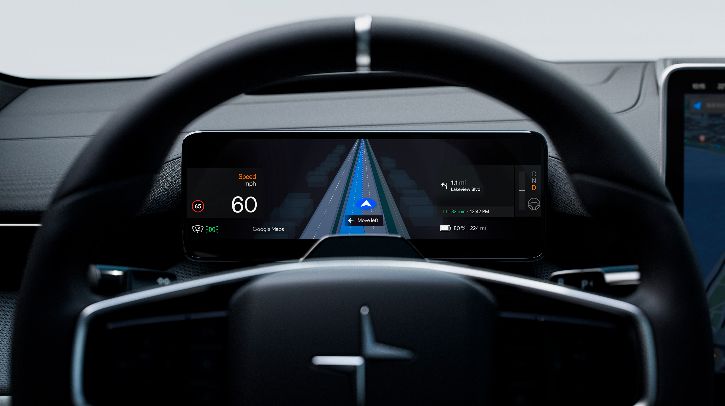Polestar has announced that it will integrate Google Maps’ latest live lane guidance into the driver display in the Polestar 4 – becoming one of the first automotive original equipment manufacturers (OEMs) to integrate the update. The technology aims to help drivers stay on course with ease while navigating complex highways and intense rush-hour traffic.
Advancing Polestar’s driver-centric UX strategy, Google Maps’ live lane guidance will be integrated directly into the 10.2-inch driver display in Polestar 4. The feature detects which lane the car is in by using Google’s advanced artificial intelligence (AI) in the vehicle to analyze elements on the road, such as lane markings and road signs, captured by one of the forward-facing cameras in the Polestar 4.
Combined with Google Maps’ navigation capabilities, the system delivers visual and audio reminders that help drivers change lanes in time. Drivers will be shown a visualization that highlights all possible lanes for the chosen route, including which lane the car is in.

Sid Odedra, head of UI/UX at Polestar, said. “Over the past five years, Polestar’s collaboration with Google has delivered many new features for Polestar owners. Live lane guidance continues the path of Polestar’s driver-centric UX strategy, reducing driver stress and improving safety by making missed exits and last-minute lane changes much less of a worry.”
The introduction of Google Maps’ live lane guidance is Polestar’s the latest step in its commitment to deliver new features through over-the-air (OTA) updates. The update will begin rolling out in the coming months for Polestar 4 vehicles in the US and Sweden, with availability expanding to additional markets, routes and vehicle models over time.
Andrew Foster, director of product management for Google Maps, said, “Polestar has been a close partner since 2020 when Polestar 2 launched as the first car with Google built in. Now, Polestar 4 will be the first to integrate our groundbreaking live lane guidance, which will help people drive with even more confidence and set a new benchmark for navigation across the auto industry.”
In related news, Bitsensing and Korea Wide launch large-scale ADAS pilot in Daegu


